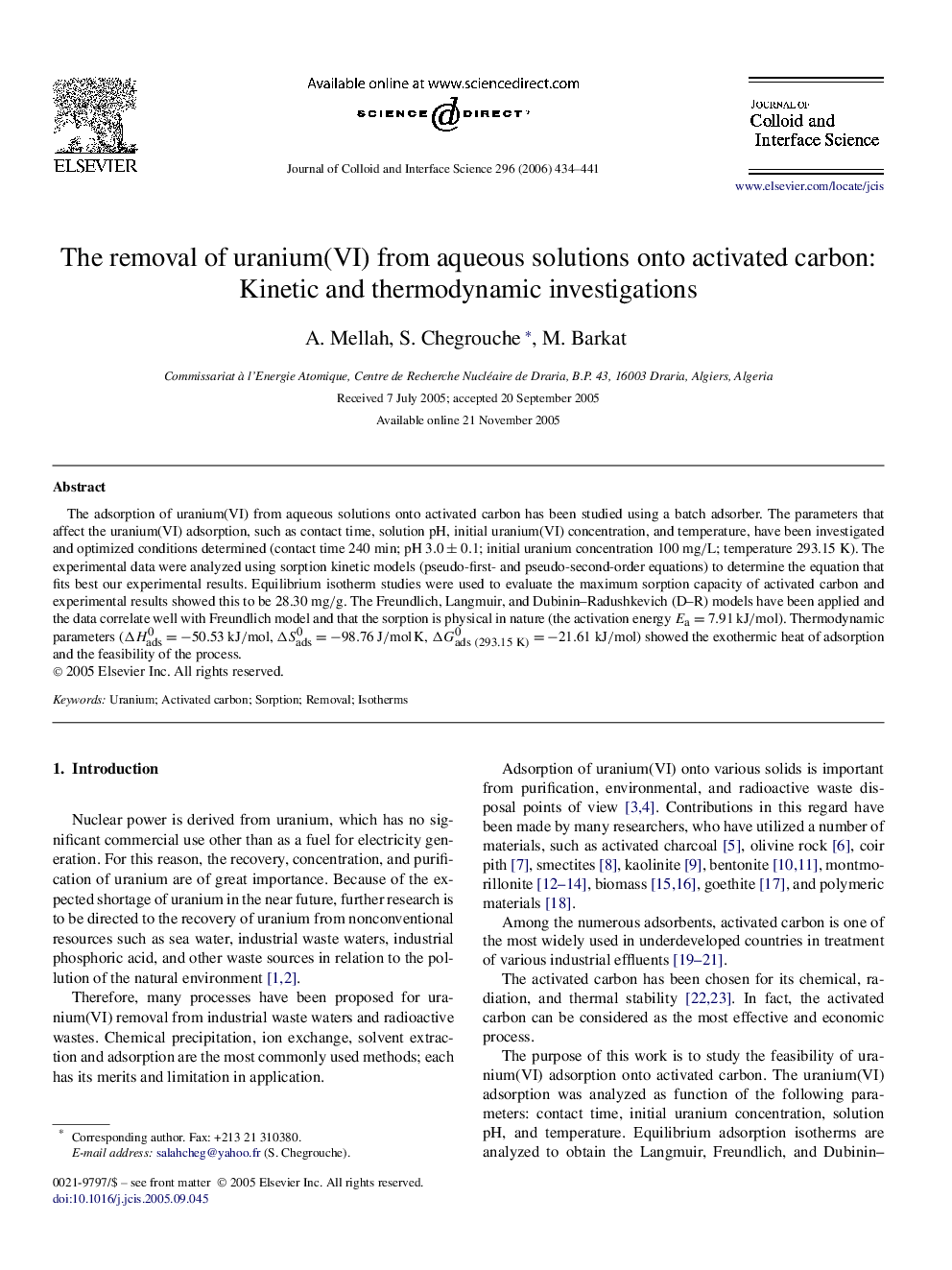| Article ID | Journal | Published Year | Pages | File Type |
|---|---|---|---|---|
| 613734 | Journal of Colloid and Interface Science | 2006 | 8 Pages |
The adsorption of uranium(VI) from aqueous solutions onto activated carbon has been studied using a batch adsorber. The parameters that affect the uranium(VI) adsorption, such as contact time, solution pH, initial uranium(VI) concentration, and temperature, have been investigated and optimized conditions determined (contact time 240 min; pH 3.0±0.13.0±0.1; initial uranium concentration 100 mg/L; temperature 293.15 K). The experimental data were analyzed using sorption kinetic models (pseudo-first- and pseudo-second-order equations) to determine the equation that fits best our experimental results. Equilibrium isotherm studies were used to evaluate the maximum sorption capacity of activated carbon and experimental results showed this to be 28.30 mg/g. The Freundlich, Langmuir, and Dubinin–Radushkevich (D–R) models have been applied and the data correlate well with Freundlich model and that the sorption is physical in nature (the activation energy Ea=7.91 kJ/molEa=7.91 kJ/mol). Thermodynamic parameters (ΔHads0=−50.53 kJ/mol, ΔSads0=−98.76 J/molK, ΔGads(293.15 K)0=−21.61 kJ/mol) showed the exothermic heat of adsorption and the feasibility of the process.
Graphical abstractUranium exists in hydrolyzed form and the following ionic species have been identified: UO22+, [(UO2)2(OH)2]2+ dimer, [(UO2)3(OH)5]+ trimer, and it is these species that are exchanged at the functional groups on the surface of activated carbon.Figure optionsDownload full-size imageDownload as PowerPoint slide
